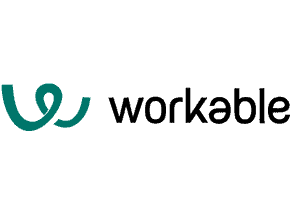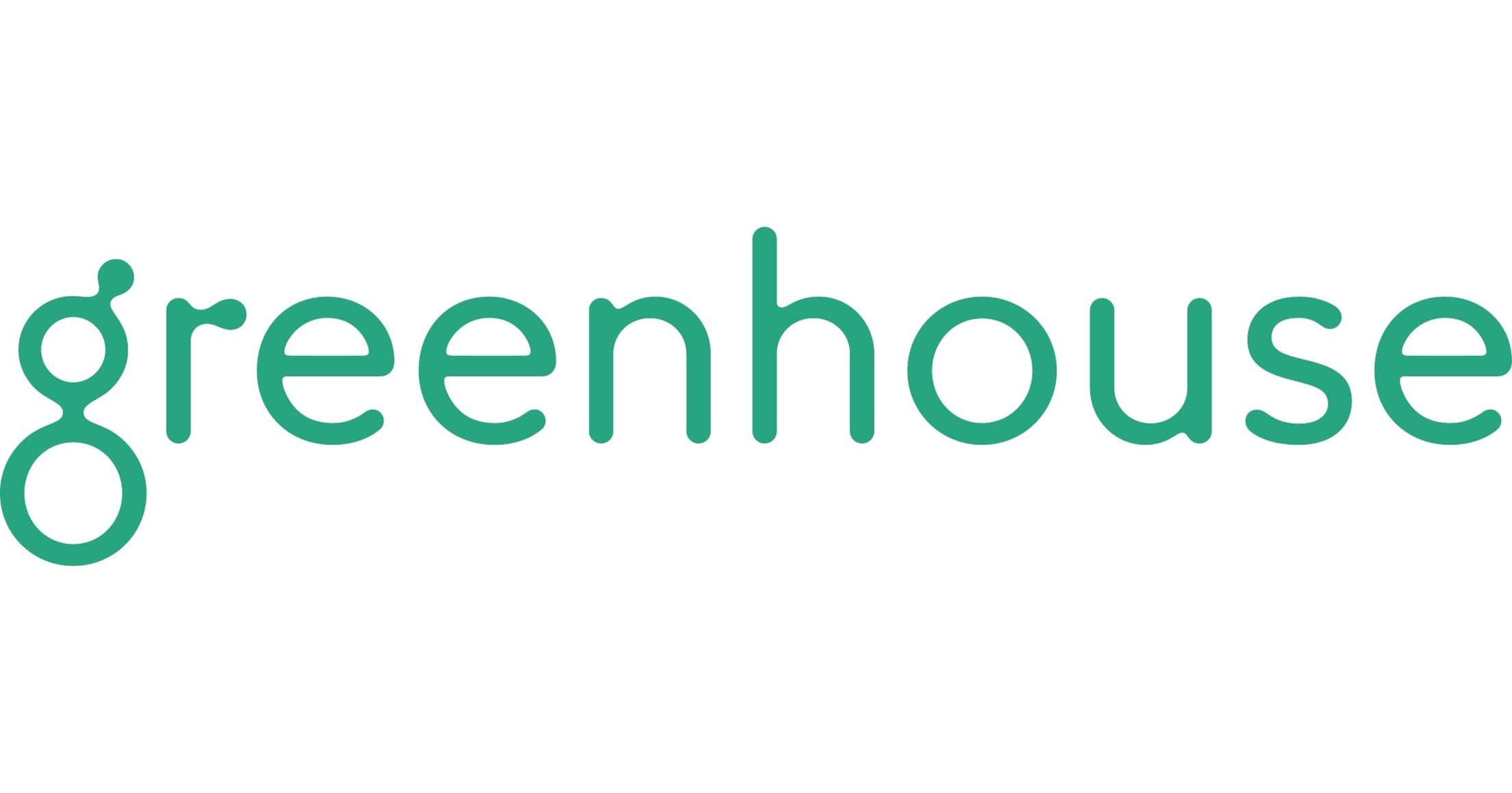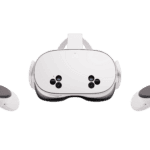In today’s hyper-competitive job market, hiring the right people quickly and efficiently is more important than ever. The best hiring software doesn’t just save time—it can transform how businesses attract, evaluate, and retain top talent. With recruiting costs rising and job seekers expecting faster, more transparent processes, companies are increasingly turning to technology to gain an edge.
In fact, studies show that businesses using recruitment automation tools reduce their time-to-hire by up to 60% and improve candidate satisfaction by nearly 50%. That’s not just a nice-to-have—that’s a strategic advantage.

Modern hiring platforms do far more than track resumes. The top solutions in 2025 now combine powerful AI-driven applicant tracking systems (ATS), automated interview scheduling, resume parsing, collaborative hiring tools, and data-driven analytics—all in one centralized dashboard. Whether you’re a startup hiring your first few employees or a large enterprise managing high-volume recruitment across departments, the right platform can simplify your workflow and scale with your growth.
Here’s what the best hiring software platforms in 2025 bring to the table:
- Smart automation: Eliminate repetitive tasks like resume screening, email follow-ups, and interview scheduling.
- AI candidate matching: Automatically rank applicants based on qualifications and job fit.
- Integrated communications: Manage emails, texts, and interview invites from one place.
- Diversity & compliance tools: Track fair hiring metrics and remain audit-ready.
- Customizable workflows: Tailor the system to your unique recruitment process.
Companies like Workable, Greenhouse, iCIMS, and VIVAHR are leading the way by offering scalable, intuitive solutions that cater to both small businesses and global enterprises. Each platform offers a different mix of features, pricing, and industry-specific tools—making it critical to evaluate your company’s needs before investing.
Here’s a comparison table you can place directly below your introduction to help readers quickly evaluate the best hiring software options for 2025:
| Hiring Software | Best For | Standout Feature | AI Capabilities | Pricing Tier |
|---|---|---|---|---|
| Workable | SMBs & mid-sized companies | One-click job posting, templates | Resume screening, suggestions | $$ (mid-tier) |
| Greenhouse | Enterprises & fast-growing teams | Structured hiring workflows, DEI tracking | Predictive hiring analytics | $$$ (premium) |
| VIVAHR | Small businesses | Affordable, easy job board distribution | Light automation | $ (budget) |
| iCIMS Talent Cloud | Large enterprises | AI Copilot assistant, end-to-end suite | Strong AI & generative tools | $$$ (premium) |
| Zoho Recruit | SMBs, staffing agencies | Custom career pages, free tier available | Moderate automation | $-$$ |
| Keka HR | Growing companies | ATS + onboarding + HR integration | Bias-reduction, resume parsing | $$ |
| JazzHR | Startups & small teams | Easy collaboration, affordable plans | Basic automation | $-$$ |
| Freshteam | Growing businesses | Full employee lifecycle coverage | AI resume screening | $-$$ |
| CEIPAL ATS | Staffing agencies | ATS + CRM, scalable & customizable | AI-matching & automation | $$-$$$ |
| ClearCompany | Mid-sized to large businesses | Recruiting + performance management tools | Predictive analytics | $$-$$$ |
This table helps readers filter options based on company size, feature needs, and budget.
The guide below breaks down the top platforms and highlights their strengths, standout features, and best use cases so you can find the perfect hiring solution for 2025 and beyond.
1. Workable

Workable is an all-in-one HR platform designed to help businesses streamline their hiring processes. It serves companies of various sizes across more than 100 countries. The software automates many administrative tasks involved in recruitment. This automation frees up time for HR teams to focus on more important aspects of hiring and management.
One standout feature of Workable is its user-friendly interface. The platform allows recruiters to manage the entire hiring process from start to finish, beginning with candidate sourcing and continuing through the selection process. Workable is trusted by approximately 30,000 companies worldwide. Its wide adoption speaks to its effectiveness as a recruiting solution for businesses looking to improve their hiring efficiency.
Small businesses particularly benefit from Workable’s features. It’s considered one of the best recruiting software options for small businesses, alongside competitors like Zoho Recruit, JazzHR, and Breezy HR. The platform offers solid automation capabilities that help streamline the hiring workflow. These features help recruiters save time while still finding exceptional candidates for their organizations.
According to reviews for 2025, Workable continues to provide effective recruiting solutions. Its key strength lies in helping businesses expedite their hiring process while maintaining quality standards.
Workable serves as a complete system of record for HR departments. Beyond just recruitment, it helps companies find, hire, and manage talent efficiently in one centralized platform.
2. Greenhouse
Greenhouse is a popular hiring platform that goes beyond typical ATS (applicant tracking system) functions. It helps companies streamline their recruitment processes from start to finish.
Many HR professionals consider Greenhouse to be one of the best ATS systems available today. The platform is designed to maximize return on hiring investments, which is crucial for growing businesses.
What makes Greenhouse stand out is its comprehensive approach. It’s not just tracking applications – it’s a holistic hiring platform that tackles the entire recruitment workflow.
Recruiters who have used multiple systems often favor Greenhouse for its user-friendly interface. Some recruiters who’ve worked with SmartRecruiter, Lever, Workday, and LinkedIn’s ATS still rank Greenhouse at the top for overall effectiveness.

The platform is built specifically for HR teams and recruiting professionals who need to manage complex hiring processes. It offers visibility into the entire recruitment pipeline, making it easier to track candidates.
While some users have expressed frustrations with certain aspects of Greenhouse, many still find it superior to alternatives in terms of setup and ease of use. The user interface receives mixed reviews, but functionality often compensates for any design shortcomings.
Companies looking for strategic growth tools might find Greenhouse particularly valuable. The platform aims to provide more than just basic applicant tracking by offering features that support comprehensive recruitment strategies.
For organizations serious about improving their hiring processes, Greenhouse represents a significant step up from basic spreadsheet tracking or entry-level ATS solutions.
3. VIVAHR
VIVAHR is a recruitment management system designed specifically for small businesses. It provides HR teams with tools to become recruitment marketing experts, helping them attract and manage top talent efficiently.
What sets VIVAHR apart is its user-friendly interface and affordability. Small businesses can easily post jobs across multiple platforms without breaking their budget or requiring extensive training.
The software helps organize applications as they come in. Hiring teams can rank qualified candidates, take notes, and collaborate to select the best people for their open positions.
For specialized industries, VIVAHR offers tailored solutions. Tech companies, cleaning businesses, and landscaping firms can all benefit from features designed with their specific hiring challenges in mind.
VIVAHR also provides real-time recruiting analytics. The platform generates automated reports that help businesses track and improve their hiring processes over time.
One standout feature is VIVAHR’s candidate management system. It keeps top candidates organized throughout the hiring process, reducing the risk of losing great potential employees due to disorganization.
Companies looking for simple but effective hiring software may find VIVAHR appealing. It focuses on making the recruitment process straightforward while still offering the necessary tools to find qualified candidates.
According to online discussions, VIVAHR continues to be mentioned among the top picks for hiring software in 2025. Users particularly appreciate its balance of functionality and ease of use.
For businesses in the cleaning industry, VIVAHR offers specialized hiring software that addresses their unique recruitment needs. Similarly, landscaping companies can benefit from tailored recruitment tools designed for their field.
4. iCIMS Talent Cloud
iCIMS Talent Cloud is a comprehensive recruiting software platform designed to help businesses find and hire top talent. It offers a complete suite of tools that streamline the entire hiring process from start to finish.
The platform helps companies attract, engage, hire, and advance the best talent to build winning workforces. It’s known for its robust applicant tracking system, which many consider to be a leading solution in the industry.
What makes iCIMS stand out is its AI capabilities. The platform includes AI-powered features that can reduce time-to-fill positions by up to 50%. This means faster hiring and less time spent on administrative tasks.
The iCIMS Copilot function gives recruiters extra help with day-to-day tasks. It uses generative AI to jump-start routine work, freeing up human recruiters to focus on more important aspects of candidate selection.
For businesses looking to improve their hiring efficiency, iCIMS offers a full range of powerful recruitment tools. These tools work together in one platform, making it easier to manage the entire recruitment process.
The system is designed to be user-friendly while still offering advanced features. Companies can use it to screen candidates more effectively and identify people who best fit their needs.
According to recent reviews, iCIMS Talent Cloud is considered an advanced hiring management tool that helps businesses attract and screen candidates efficiently. It’s built to handle the needs of modern recruiting teams.
5. Zoho Recruit
Zoho Recruit stands out as a cloud-based hiring platform that helps HR teams and recruitment agencies fill positions quickly. It offers the digital tools needed for efficient talent acquisition in one complete package.
The platform works well for both internal HR departments and external staffing agencies. Its web-based recruitment software is designed to be easy to use, making the hiring process smoother for all involved.
Companies looking to save money might appreciate that Zoho offers free recruiting tools to help build a structured hiring process. This makes it accessible for businesses of all sizes.
The applicant tracking system (ATS) has received awards from leading review platforms. Many top recruiting firms choose Zoho for this feature, which helps organize candidates throughout the hiring pipeline.
Zoho Recruit helps companies automate their hiring process, saving time for recruiters and HR professionals. Its automation features handle repetitive tasks, allowing hiring teams to focus on finding the right candidate.
The software provides tools to post job openings, screen applicants, schedule interviews, and manage the entire recruitment workflow in one place. This centralized approach eliminates the need for multiple systems.
Zoho Recruit integrates with job boards and social media platforms, expanding the reach of job postings. This wider net helps companies attract more qualified candidates quickly.
6. Keka HR
Keka HR offers a powerful recruitment management software designed to make hiring simpler and more effective. It combines essential recruitment tools in one platform, helping teams find and hire the right candidates.
The system includes an applicant tracking system that follows candidates from initial application through onboarding. Teams can manage applications, sort resumes, and screen potential hires without switching between different programs.
What makes Keka stand out is its AI-powered features that reduce hiring bias and automate repetitive tasks. This lets HR teams focus on connecting with candidates rather than handling paperwork.
Companies using Keka report smoother collaboration between hiring managers and recruiters. The shared platform keeps everyone updated on candidate status and hiring progress.
Keka integrates with the broader HR software suite from the same company. This means new hire information flows directly into the HR system after selection, cutting down on duplicate data entry.
The interface is straightforward, with tools that both experienced recruiters and occasional hiring managers can use effectively. User reviews on Gartner Peer Insights highlight the software’s ease of use.
Keka offers pricing plans for various business sizes, from small companies to large enterprises. They provide a 7-day free trial through their main website, letting teams test the system before committing.
For companies looking to upgrade their hiring process, Keka delivers a balance of advanced features and user-friendly design. It helps streamline recruitment while maintaining a personal touch in candidate interactions.
7. JazzHR
JazzHR is a recruitment platform designed specifically for small businesses looking to streamline their hiring process. The software offers tools that replace time-consuming manual tasks with automated solutions that make hiring easier.
Small teams find JazzHR especially helpful because it makes complex hiring processes more accessible. It’s built to help growing companies without requiring a huge budget.
One of the standout features of JazzHR is its applicant tracking software, which helps businesses organize candidates throughout the hiring process. This system keeps everything in one place so nothing falls through the cracks.
The platform boasts a 98% customer retention rate, suggesting most businesses find value in the service after signing up. Their pricing is transparent, which helps small businesses plan their recruitment budget without surprises.
JazzHR also helps manage employee referrals. Their recruiting software keeps the referral process organized for both talent acquisition teams and employees making recommendations.
For businesses that need to find quality candidates quickly, JazzHR claims to help companies hire top talent faster. The software includes features that speed up screening and selection.
Growing businesses often choose JazzHR because it provides best-in-class tools that don’t require extensive training or technical knowledge. This makes it practical for companies without dedicated HR departments.
The platform belongs on lists of supercharged hiring platforms for small businesses because it brings enterprise-level recruitment capabilities to smaller organizations at a more affordable price point.
8. Freshteam
Freshteam serves as an HR software solution specifically designed for growing businesses. It helps companies manage their entire employee lifecycle – from attracting talent to offboarding departing team members.
The platform streamlines the recruitment process by allowing teams to track and manage candidates effectively. Users can easily review applications, schedule interviews, and collaborate with hiring teams in one central location.
Freshteam by Freshworks is trusted by over 9,000 growing businesses looking to modernize their HR processes. The software aims to simplify complex hiring workflows that often become challenging as companies expand.
One notable aspect of Freshteam is its comprehensive approach. Beyond just applicant tracking, it includes onboarding and offboarding capabilities that save HR teams valuable time and reduce administrative burden.
Companies seeking alternatives have several options to consider. According to market analysis, main competitors include iCIMS Talent Cloud, Zoho Recruit, and Greenhouse Recruiting among others.
Freshteam positions itself as a smart HR software solution rather than just an applicant tracking system. This distinction reflects its broader functionality compared to more narrowly focused recruiting tools.
The platform offers various pricing tiers to accommodate different business sizes and needs. Small organizations can start with basic features while larger enterprises can access more advanced capabilities.
For HR professionals tired of juggling multiple systems, Freshteam provides a unified interface for handling recruitment tasks. This integration helps eliminate data silos that often exist between different HR functions.
As businesses plan their HR technology strategy for 2025, Freshteam represents a viable option for those seeking to simplify hiring processes while maintaining robust capabilities for talent management.
9. CEIPAL Applicant Tracking System
CEIPAL offers an AI-powered applicant tracking system designed specifically for staffing agencies and recruiting teams. This platform helps streamline the entire hiring process from sourcing to placement.
The system automatically delivers qualified talent directly to your dashboard, saving recruiters valuable time. It integrates with existing workflows to make talent acquisition more efficient and less manual.
One of CEIPAL’s key strengths is its intelligent approach to recruiting. The platform uses AI to help match the right people with the right roles, improving placement accuracy and reducing time-to-hire metrics.
For staffing agencies, CEIPAL provides a complete solution that combines both ATS and CRM functionality. This integration helps teams manage both candidates and clients in one unified system.
The platform automates routine tasks that typically slow down the hiring process. Hiring managers can easily source, shortlist, and select candidates without jumping between multiple systems or spreadsheets.
CEIPAL stands out for its scalability, making it suitable for both growing agencies and established recruiting operations. The software adapts to increasing workloads and team sizes without performance issues.
According to Forbes Advisor, CEIPAL provides a comprehensive platform with ATS and CRM as its core offering. This integrated approach helps recruiting teams maintain consistency throughout their operations.
The system also offers customization options to match specific industry needs and recruiting workflows. This flexibility allows teams to tailor the software to their unique requirements rather than changing their processes.
10. ClearCompany
ClearCompany stands out as a leading talent management system that combines recruiting and employee management tools in one platform. This software helps businesses streamline their hiring processes from start to finish.
The platform includes an AI-powered applicant tracking system (ATS) with tools for sourcing, nurturing, and hiring candidates. This makes it easier for teams to find and attract the right talent.
ClearCompany doesn’t stop at recruiting. The platform also offers onboarding, learning, and performance management tools that help businesses manage employees after they’re hired.
For specific industries like manufacturing, ClearCompany provides tailored HR solutions that address unique workforce challenges. These tools help companies in this sector recruit and onboard employees more efficiently.
According to recent information, ClearCompany appears on lists of the best applicant tracking systems of 2025. The software continues to evolve with features that help teams execute their recruiting strategies effectively.
One advantage of ClearCompany is its comprehensive approach. Instead of using separate systems for different HR functions, companies can manage the entire employee lifecycle in one place.
The platform offers features for goal alignment and performance tracking, which helps managers understand how employees contribute to company objectives. This gives businesses better insight into their workforce.
ClearCompany works well for companies of various sizes, though it may be particularly valuable for growing organizations that need scalable HR solutions.
Key Features of Top Hiring Software
Effective hiring software needs specific features to help companies find and manage the best talent efficiently. The right tools make recruitment faster and more accurate while providing valuable insights.
User-Friendly Interface
A clean and intuitive interface ensures recruiters can navigate the software easily. This reduces training time and increases adoption across teams.
The best hiring platforms offer customizable dashboards that let users arrange information based on their priorities. This might include candidate pipelines, upcoming interviews, or urgent positions to fill.
Modern interfaces include drag-and-drop functionality for moving candidates through hiring stages. This visual approach helps teams track progress at a glance.
Mobile compatibility is essential too. Recruiters need to review applications, schedule interviews, and communicate with candidates while away from their desks.
Color-coding and visual cues help users quickly identify high-priority items or candidate status without reading detailed information.
Advanced Analytics and Reporting
Top hiring software provides data and analytics that help companies make better recruitment decisions. These tools track key metrics like time-to-hire, cost-per-hire, and source effectiveness.
Customizable reports let HR teams analyze their recruitment funnel to identify bottlenecks. For example, if many candidates drop out after the first interview, the software can highlight this trend.
Key metrics tracked by quality hiring software:
- Time-to-fill positions
- Candidate conversion rates
- Cost-per-hire by department
- Source quality comparisons
- Interviewer effectiveness
AI-powered candidate matching uses predictive analytics to rank applicants based on how well they match job requirements. This saves time by highlighting the most promising candidates first.
Recruitment software also provides diversity and inclusion metrics to help companies build more balanced teams.
Seamless Integration with Existing Systems
Effective hiring platforms connect with other HR tools and business systems. This creates a smooth information flow between recruitment, onboarding, and employee management.
Integrations with email platforms allow recruiters to communicate with candidates without switching between applications. Calendar connections make scheduling interviews simple and prevent double-booking.
Good hiring software works with popular job boards to post openings automatically. This extends reach and saves time on manual posting to multiple sites.
Background check services integrate directly, eliminating the need to enter candidate information in separate systems. Similarly, assessment tools feed results back to candidate profiles automatically.
Resume parsing technology extracts key information from applications and formats it consistently. This standardization makes comparison easier and builds searchable candidate databases.
Benefits of Using Hiring Software
Hiring software offers crucial advantages that transform how companies find and hire talent. These tools make the process faster and improve how job seekers experience your company’s recruitment efforts.
Streamlining Recruitment Processes
Hiring software automates many time-consuming tasks that recruiters typically handle manually. This automation includes resume screening, application sorting, and sending status updates to candidates.
With good recruitment software, hiring teams can post job openings to multiple job boards with just a few clicks. This saves hours of repetitive work and ensures wider visibility.
The centralized database feature keeps all candidate information in one place. Instead of digging through emails or spreadsheets, recruiters can quickly access resumes, notes, and communication history.
Many platforms offer built-in collaboration tools that let hiring managers and team members share feedback about candidates. This speeds up decision-making and reduces the chance of good candidates slipping through the cracks.
Analytics and reporting features help teams identify which recruiting channels work best. This data-driven approach lets companies focus their efforts on strategies that deliver results.
Enhancing Candidate Experience
Modern hiring software significantly improves how job seekers interact with your company. Quick, automated responses keep candidates informed about their application status, reducing uncertainty and frustration.
Mobile-friendly application processes make it easier for candidates to apply from any device. This convenience can increase your applicant pool and attract talent who might otherwise abandon complicated application systems.
Personalized communication tools allow recruiters to send targeted messages based on a candidate’s qualifications or interests. This personal touch helps build stronger connections with potential hires.
Self-scheduling interview features eliminate the back-and-forth emails trying to find available times. Candidates can select interview slots that work for them, which speeds up the hiring process and shows respect for their time.
Clear, consistent communication throughout the hiring journey creates a positive impression of your company culture, even for candidates who aren’t selected.
Frequently Asked Questions
Recruitment software can streamline hiring workflows, improve candidate experiences, and help companies find the right talent faster. Here are answers to common questions about selecting and using these tools.
What are the top recruitment software options for small to mid-sized businesses?
Small to mid-sized businesses often need affordable yet powerful hiring solutions. Workable and VIVAHR stand out as excellent choices for SMBs due to their user-friendly interfaces and scalable pricing.
Zoho Recruit offers a comprehensive solution with a free tier for very small teams and affordable paid plans as companies grow. The platform includes customizable career pages and social recruiting features.
VIVAHR specifically caters to small businesses with straightforward job posting tools and templates designed to attract quality candidates without requiring technical expertise.
How does recruitment automation software improve the hiring process?
Recruitment automation dramatically cuts time-to-hire by handling repetitive tasks. Modern applicant tracking systems work by automatically screening resumes, scheduling interviews, and sending personalized follow-ups to candidates.
These tools can reduce hiring time by up to 60% by eliminating manual resume sorting. They also help maintain consistent communication with all applicants, improving the candidate experience.
Smart systems like iCIMS Talent Cloud use AI-powered matching to identify qualified candidates from large applicant pools, ensuring hiring managers see the most relevant profiles first.
What features should be prioritized in software for efficient employee hiring?
Mobile-friendly application processes should top the priority list as over 70% of job seekers now use smartphones in their search. Centralized sourcing solutions that pull candidates from multiple channels into one dashboard save significant time.
Advanced analytics and reporting help track recruitment metrics and identify bottlenecks. Look for software with customizable workflows that match your specific hiring processes.
Integration capabilities with background check services, skills assessment tools, and HRIS platforms create a seamless hiring ecosystem and eliminate duplicate data entry.
Which recruitment platforms are recommended for large enterprises?
Greenhouse and iCIMS Talent Cloud lead the enterprise recruitment space with robust compliance features and scalability across multiple departments and locations. These platforms handle high-volume hiring with specialized workflows for different positions.
Enterprise solutions should offer advanced compliance tracking to meet EEOC, OFCCP, and global hiring regulations. Both options provide detailed audit trails and reporting.
These platforms also excel in creating consistent candidate experiences regardless of position type or location, supporting complex organizational structures with role-based permissions.
What are the benefits of using free recruiting software, and are they viable for professional use?
Free recruiting tools can be viable for startups and small teams with basic hiring needs. Many offer limited but essential features like job posting management, candidate tracking, and email templates.
Some premium platforms offer free tiers with restrictions on job postings or user counts. These provide a risk-free way to test capabilities before committing to paid versions.
The main tradeoff is usually limited automation, integration options, and customer support. Companies typically outgrow free versions as hiring needs become more complex or frequent.
How do the best recruiting tools integrate with existing HR systems?
Top recruitment software offers pre-built connectors to popular HRIS platforms like Workday, BambooHR, and ADP. These integrations create a centralized solution that transfers new hire data automatically.
API access allows for custom integrations with proprietary systems when needed. This flexibility ensures recruitment software fits into existing technology ecosystems.
Calendar integrations with Outlook and Google simplify interview scheduling, while connections to background check services and assessment tools create seamless candidate evaluation workflows.







